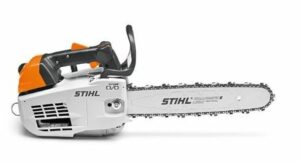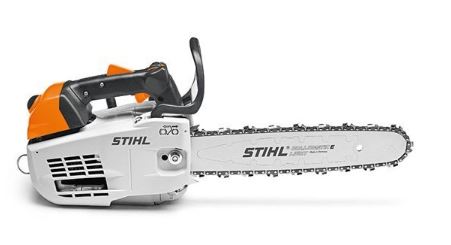While here in Ireland we typically get milder weather, for professionals the early winter mornings can still be hazardous, with ice and frost building up unexpectedly. It’s important to keep safety as a priority and to expect the unexpected. Here are a few reminders for professional winter chainsaw use.
Winter Chainsaw Use: Check the ambient temperature
Our Irish weather typically protects us from the extremes other countries face this time of year. It rarely happens, but if you’re working in temperatures at or below 4 degrees Celcius, you should consider using a chainsaw with a winter mode or heating system. If your chainsaw doesn’t have this feature, be aware of poor performance or erratic idling. This could be a sign that the fuel isn’t reaching the engine which could lead to damage and complete engine failure. If this begins to happen, cut out your engine and wait till the weather improves before continuing with the work at hand. In the more extreme cold temperatures, your saw’s oil can thicken.
If you’re working in the cold, switch to a bar and chain oil to better lubricate your chain. Cold weather oils are available on the market. Come stop by our centre and we’ll happily service your chainsaw. Otherwise, you’ll want to do your own research and only use tools (and oils) that will not risk damaging your equipment. Keep in mind that lighter oils are prone to leaking more easily so are best used temporarily.
When wood gets colder it becomes harder. It can help to decrease your chainsaw chain’s filing angle by 5 degrees. This can increase your saw’s cutting performance and decrease wear to your guide bar and chain.
As Always And More than Ever: Mind Your Footing
As you know, at this time of year things can get slippery. While the sun may be out, any bit of dampness mixed with rotting leaves can make forest ground as slippery as ice. And when the weather gets to freezing temperatures at night, small ice patches can remain in shaded areas around trees — right in the areas where you’ll be looking for footing. Be aware that you can’t anticipate these issues until you’ve already stepped into them. Put safety first, and consider delaying work when it’s rainy, frosty or when there are high winds.
